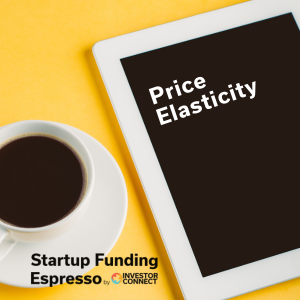Startup Funding Espresso -- Price Elasticity

Price Elasticity Hello, this is Hall T. Martin with the Startup Funding Espresso -- your daily shot of startup funding and investing. Price elasticity measures how much a price increase will decrease overall revenue. If an increase in price results in no reduction in revenue then the price is considered inelastic. Test your product\u2019s price elasticity by increasing the price by 10% then measure the overall revenue after a month. If the overall revenue has gone down then the price is elastic which means the market is sensitive to price changes. On the other hand, if the overall revenue goes up, the price is inelastic. To calculate the price elasticity metric consider the following: Price elasticity is calculated as the percentage of overall revenue increase divided by the price increase. If in our example our overall revenue goes up by 15% from a 10% price increase then the price elasticity is 1.5.\xa0\xa0 This means the price is inelastic. If in our example our overall revenue goes up by 5% from a 10% price increase then the price elasticity is 0.5. This means the price is elastic This indicates how sensitive customers are to price increases and what latitude you have in moving the price to account for inflation and other factors. It\u2019s important to understand the price elasticity of your product as it shows how a price increase will impact overall revenue. \xa0 Thank you for joining us for the Startup Funding Espresso where we help startups and investors connect for funding. Let\u2019s go startup something today. _______________________________________________________ For more episodes from Investor Connect, please visit the site at: \xa0 Check out our other podcasts here: \xa0 For Investors check out: \xa0 For Startups check out: \xa0 For eGuides check out: \xa0 For upcoming Events, check out \xa0\xa0 For Feedback please contact info@tencapital.group\xa0\xa0\xa0 Please , share, and leave a review. Music courtesy of .